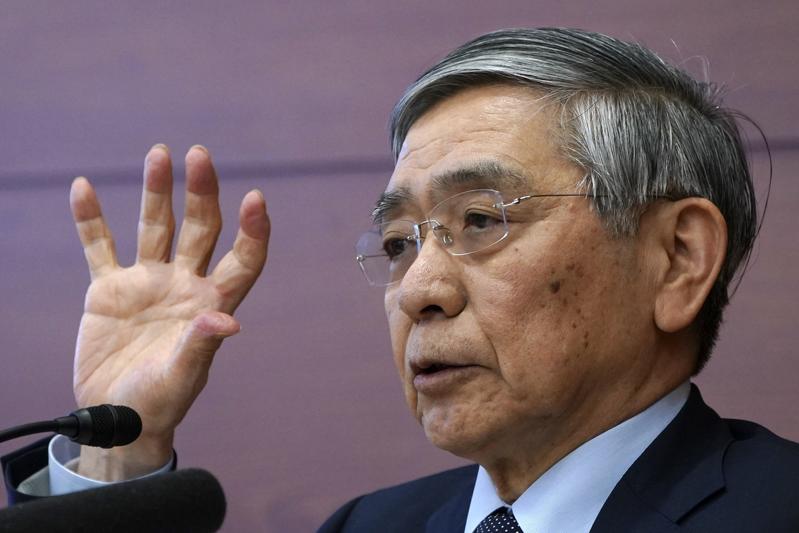 Bank of Japan Governor Haruhiko Kuroda speaks during a news conference in Tokyo on March 16, 2020. (PHOTO / AP)
Bank of Japan Governor Haruhiko Kuroda speaks during a news conference in Tokyo on March 16, 2020. (PHOTO / AP)
TOKYO - Haruhiko Kuroda delivers his last press conference as Japan's central bank chief on Friday, ending a decade of unconventional policy that included "bazooka" stimulus and a push to change public perceptions with a wall of money and Peter Pan metaphors.
Hand-picked by then premier Shinzo Abe to break Japan out of deflation, Kuroda will see his second, five-year term end on Saturday and hand over the baton to his successor Kazuo Ueda.
The 78-year-old gives his press conference at 0630GMT, the Bank of Japan (BOJ) said.
When allusions to Peter Pan and spacecraft failed, the BOJ shifted to a defensive, long-term approach in 2016 with the introduction of yield curve control
Shock therapy was among the key features of Kuroda's monetary experiment, under which the BOJ deployed a huge asset-buying programme in 2013 partly to convince the public that prices will finally start to rise after decades of deflation.
Kuroda was not the first BOJ chief to attempt to influence public perceptions with monetary easing. Toshihiko Fukui, who presided from 2003 to 2008, frequently expanded quantitative easing to "show the BOJ's determination to beat deflation" and "exert stronger influence on public expectations."
The next gen board professional program serves the next generation of leaders who want to excel in trusted C-suite positions.
ALSO READ: New BOJ chief to slowly unwind Kuroda's policy experiment
But Kuroda went a step further by binding policy to his 2 percent inflation target and setting a two-year timeframe for meeting the goal. The target remained elusive only until recently, when the Ukraine crisis boosted global commodity prices and pushed inflation well above 2 percent.
Simple communication was also a key feature of Kuroda's policy. In 2015, he alluded to the Peter Pan fairy tale in explaining that to fire up inflation, the BOJ needed to have the public believe in its monetary magic with massive stimulus.
"I trust that many of you are familiar with the story of Peter Pan, in which it says, 'the moment you doubt whether you can fly, you cease forever to be able to do it'," he said back then. "Yes, what we need is a positive attitude and conviction."
In another speech that year, Kuroda described how, like a spacecraft attempting to move away from Earth's gravitation, "tremendous velocity" was needed to end Japan's deflationary equilibrium.
When allusions to Peter Pan and spacecraft failed, the BOJ shifted to a defensive, long-term approach in 2016 with the introduction of yield curve control (YCC). The hope was that by capping long-term rates around zero and patiently reflating the economy, inflation would eventually perk up.
ALSO READ: BOJ survey: Japan's business mood sours to 2-year low
The shift to YCC also sought to stop super-long yields from falling too much, a nod to growing concern that prolonged low rates could hurt financial institutions' profits enough to discourage them from boosting lending.
"The BOJ's thinking on interest rate changed dramatically in 2016. It abandoned the idea that the lower the borrowing costs, the better," said former BOJ board member Takahide Kiuchi.
While the BOJ continues its battle propping up inflation and wages, other major central banks have seen their credibility on the line as they struggle to tame soaring inflation.
If Japan sees inflation sustainably hitting 2 percent, incoming BOJ chief Ueda will face a fresh communication challenge of steering a smooth exit from his predecessor's radical stimulus.
"During Kuroda's era, the BOJ put in place a mix bag of unconventional measures," Kiuchi said. "The BOJ's failure to change public expectations raises a lot of questions about the effectiveness of unconventional monetary policy."



